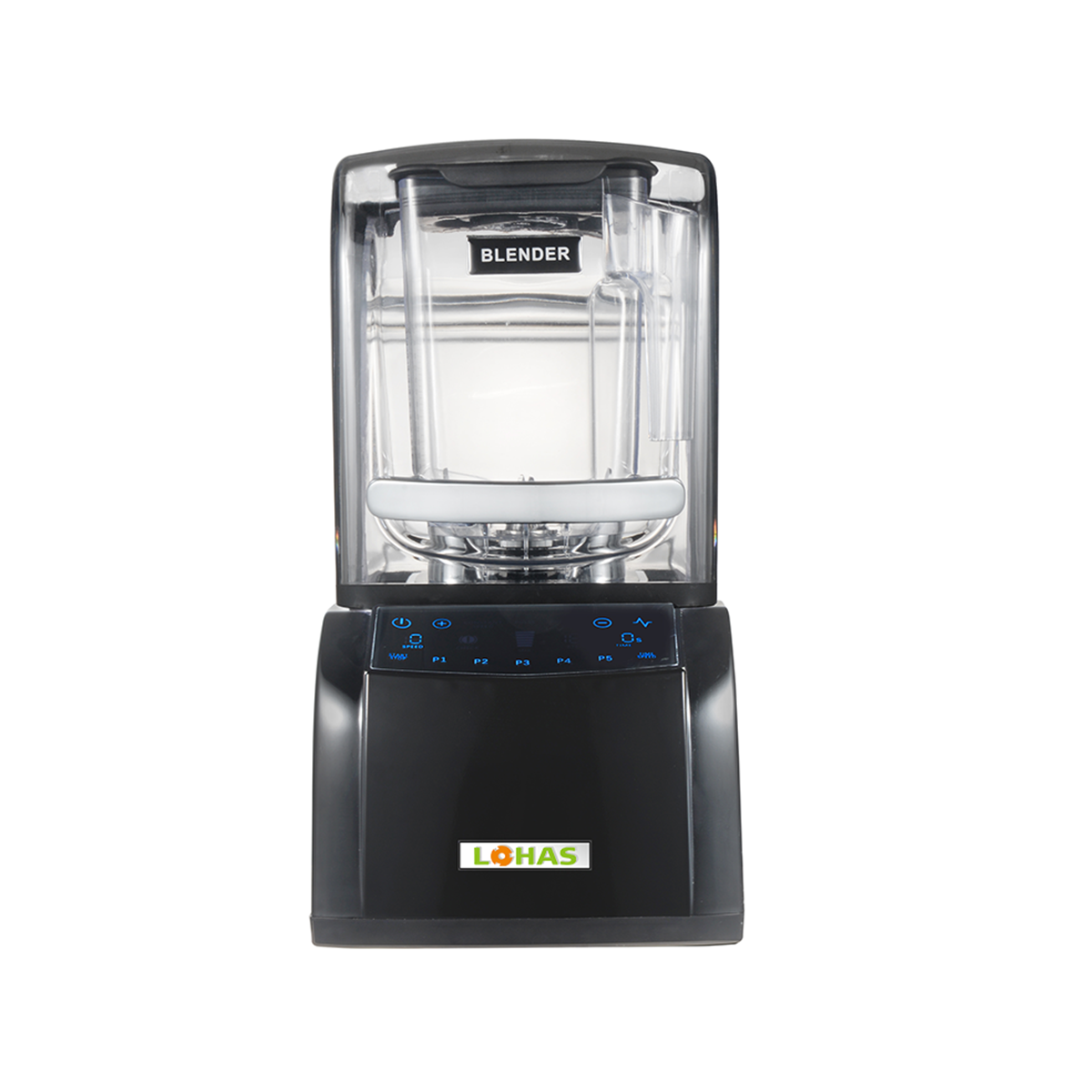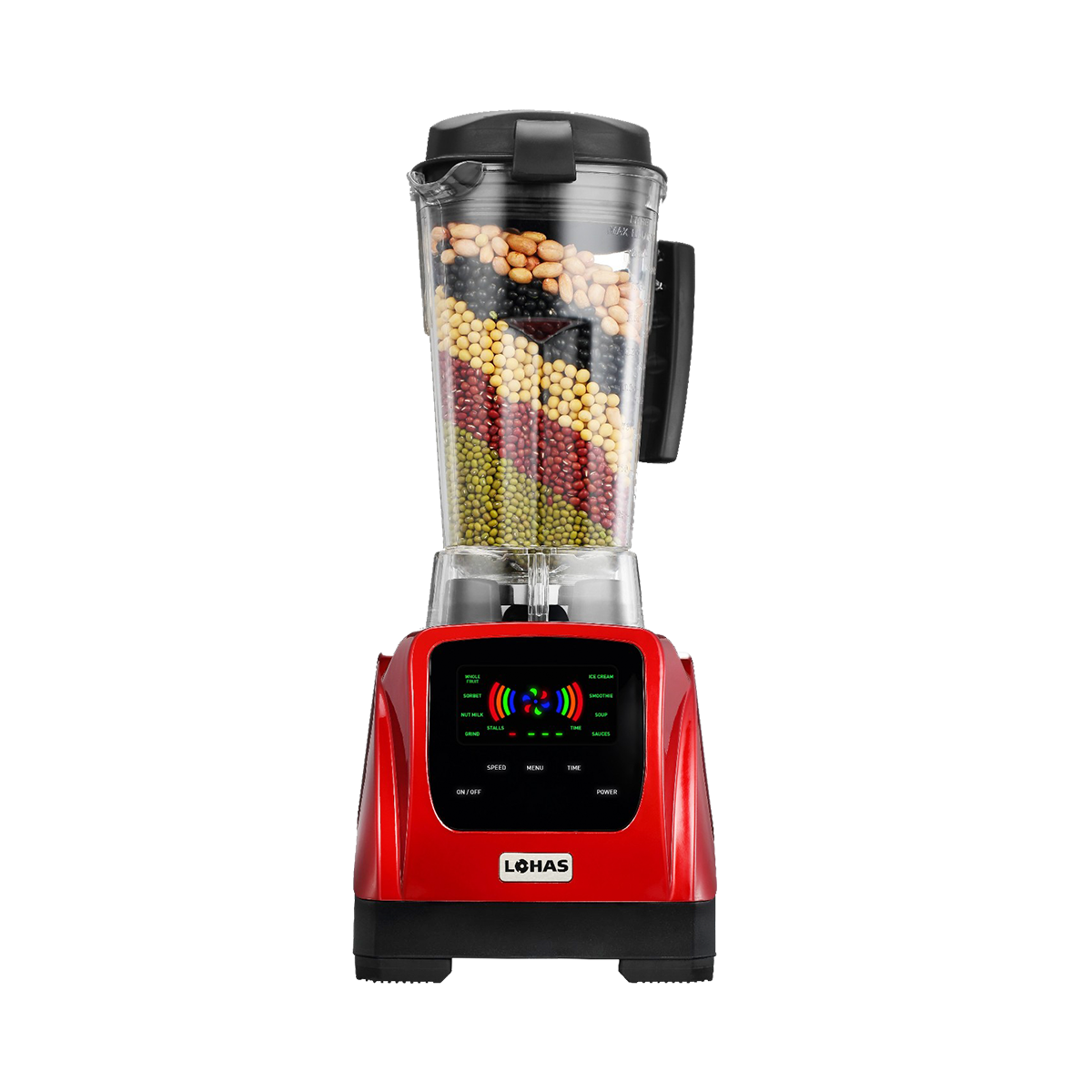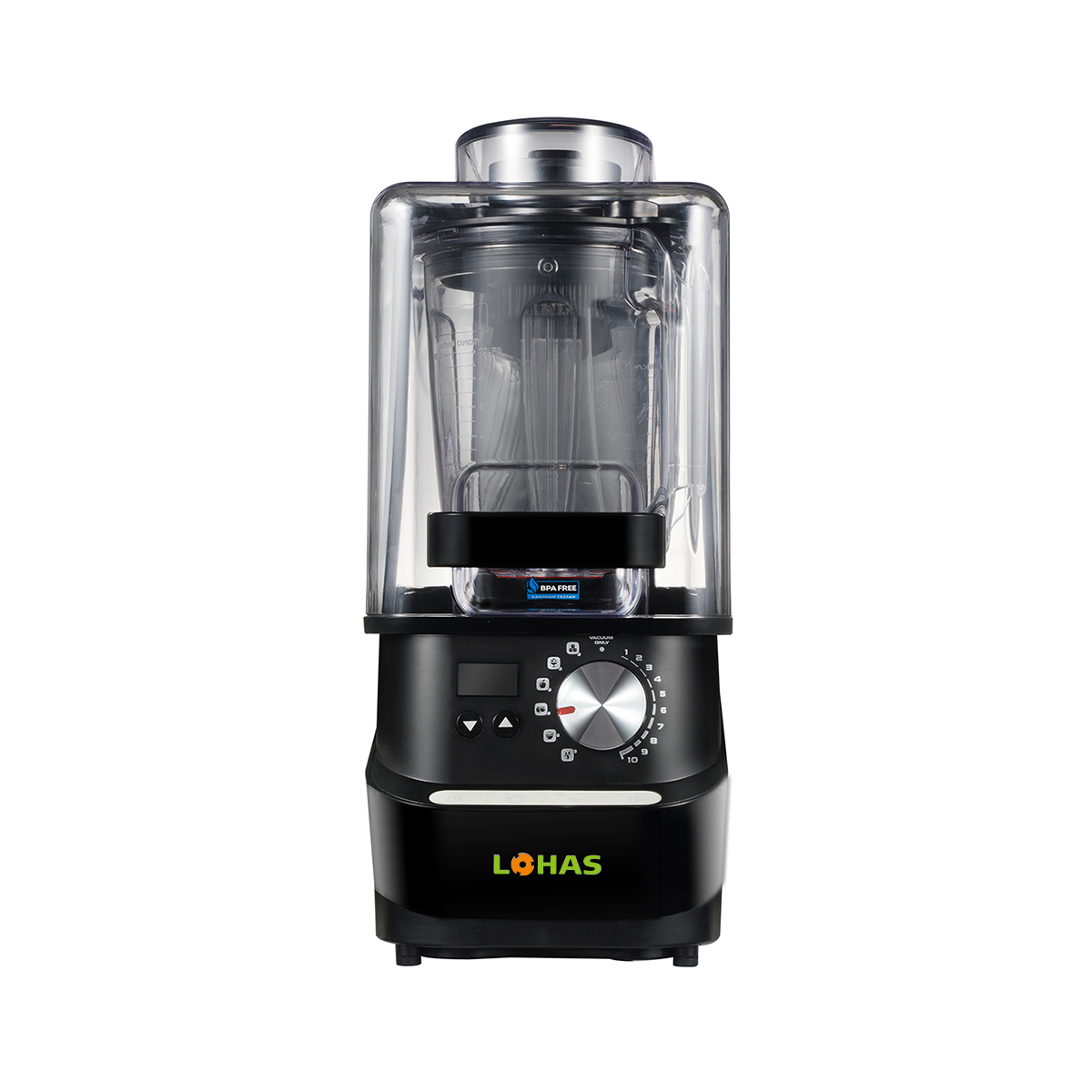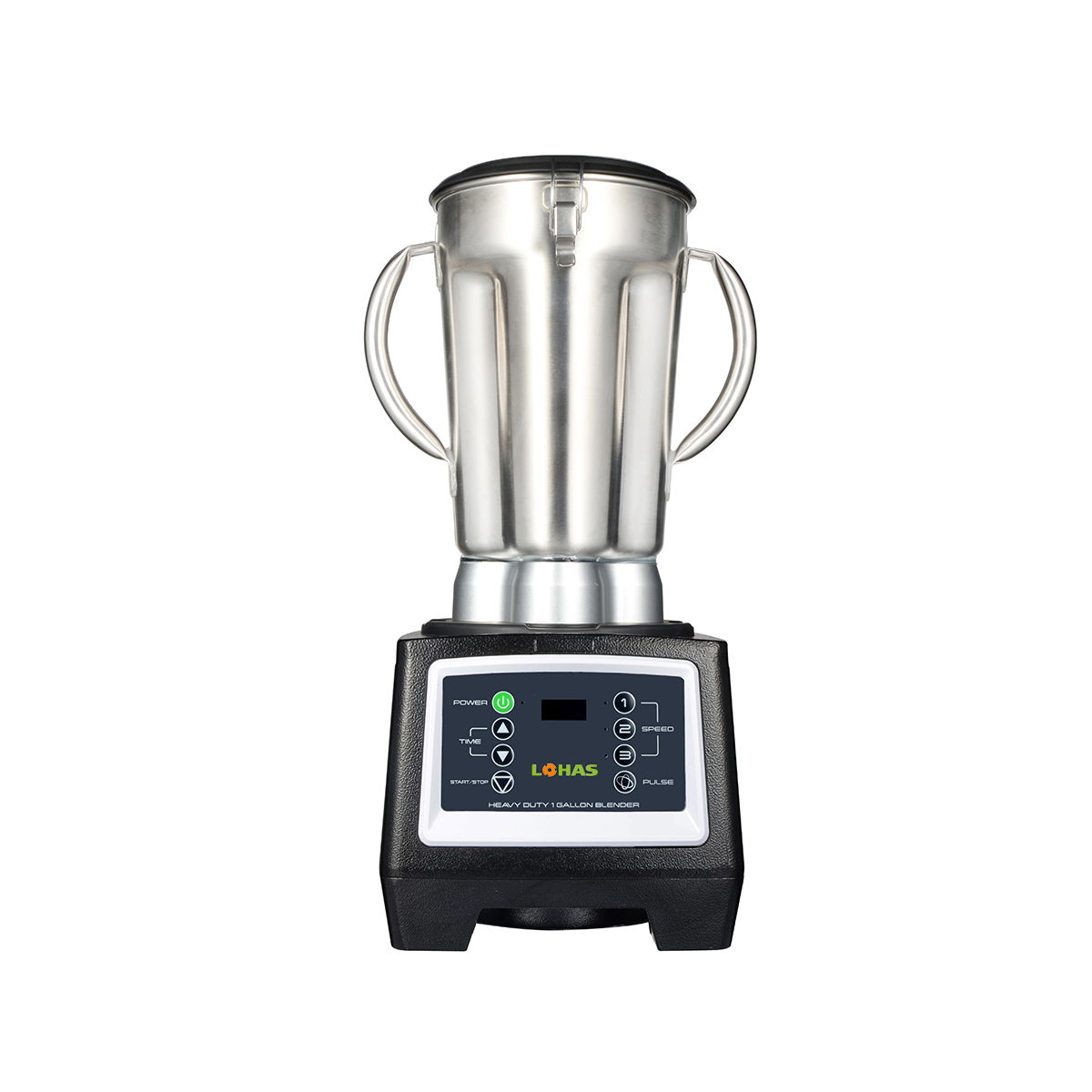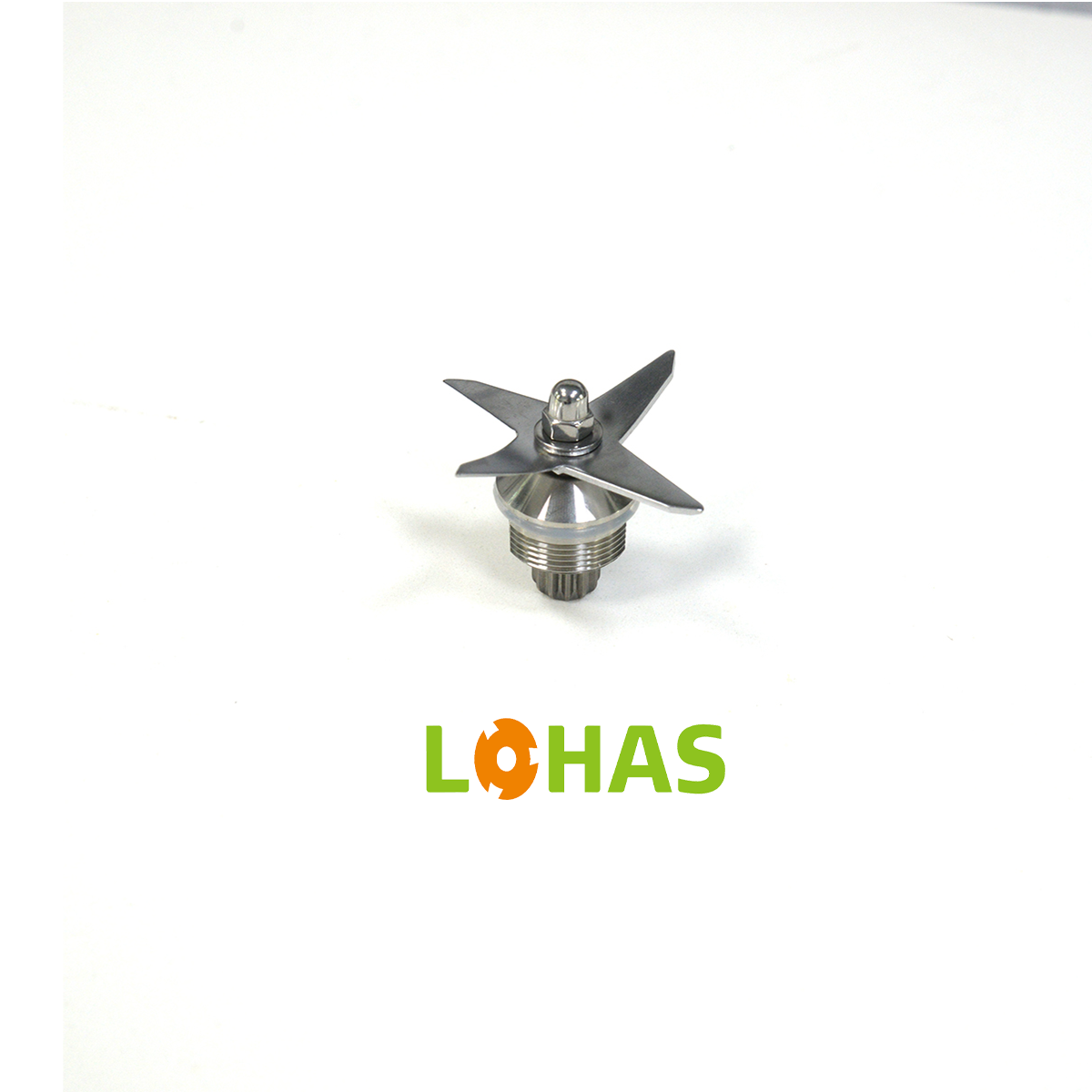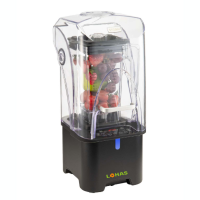Lors de la sélection d'un blender commercial lourd, vous devez prioriser la puissance et la force du moteur. Ces éléments déterminent l'efficacité avec laquelle votre blender fonctionne, surtout lorsqu'il s'agit d'ingrédients difficiles.
Importance de la puissance du moteur
Puissance en watts et chevaux-vapeur
La puissance du moteur, mesurée en watts et en chevaux-vapeur, est cruciale pour les performances d'un blender. Une puissance plus élevée signifie que le blender peut gérer des tâches plus exigeantes. Par exemple, broyer de la glace ou mixer des noix nécessite une puissance considérable. Vous devriez viser un blender d'au moins 1 500 watts ou 2 chevaux-vapeur afin de vous assurer qu'il puisse traiter n'importe quel ingrédient que vous lui soumettrez.
Impact sur les performances
Un moteur puissant influence directement les performances du mixeur. Il garantit un mélange fluide et régulier, réduisant le temps nécessaire pour obtenir la texture souhaitée. Grâce à un moteur robuste, vous pouvez mixer de grandes quantités sans craindre la surchauffe ou la défaillance du moteur. Cette efficacité est essentielle dans une cuisine commerciale dynamique où chaque minute compte.
Moteur direct vs. moteur à courroie
Comprendre le type de moteur est essentiel. Les moteurs à entraînement direct sont connectés directement aux lames, offrant plus de puissance et d'efficacité. Ils nécessitent moins d'entretien et assurent de meilleures performances. En revanche, les moteurs à courroie utilisent une courroie pour transmettre la puissance. Bien qu'ils puissent être plus silencieux, ils requièrent souvent plus d'entretien et s'usent plus rapidement.
Niveaux de bruit
Les niveaux de bruit peuvent affecter l'ambiance de votre établissement. Les moteurs à entraînement direct ont tendance à être plus bruyants en raison de leur puissance. Cependant, certains modèles sont équipés de fonctionnalités réduisant le bruit. Tenez compte de l'environnement dans lequel vous utiliserez le blender. Si le bruit est un problème, privilégiez les modèles spécialement conçus pour fonctionner en silence sans compromettre la puissance.
Capacité et taille
Lorsque vous choisissez un blender commercial robuste, vous devez prendre en compte sa capacité et sa taille. Ces facteurs déterminent à quel point le blender s'intègre bien dans votre cuisine et répond à vos besoins de production.
Déterminer la bonne capacité
Simple portion contre plusieurs portions
Vous devez décider si votre blender traitera des portions individuelles ou plusieurs portions à la fois. Si votre entreprise sert des plats individuels, une capacité plus petite pourrait suffire. Toutefois, pour de grandes quantités, optez pour un blender doté d'un récipient plus grand. Ce choix garantit une meilleure efficacité et réduit le temps consacré aux tâches de mélange répétitives.
Considérations sur l'espace
Tenez compte de l'espace disponible dans votre cuisine. Un blender de grande capacité nécessite plus de place. Mesurez l'espace de votre plan de travail avant d'acheter. Assurez-vous que le blender s'adapte confortablement sans encombrer votre espace de travail. Cette préparation permet de maintenir un environnement de cuisine organisé et efficace.
Portabilité
Considérez la portabilité du blender si vous devez le déplacer fréquemment. Un modèle plus léger équipé de poignées ou de roulettes offre une mobilité facile. Cette caractéristique s'avère avantageuse dans un environnement de cuisine dynamique où la flexibilité est essentielle. Un blender portable s'adapte à diverses tâches et emplacements, offrant ainsi de la polyvalence dans vos opérations.
Durabilité et qualité de construction
Lorsque vous investissez dans un blender commercial robuste, vous devez privilégier la durabilité et la qualité de construction. Ces critères garantissent que votre blender résiste aux exigences de l'utilisation quotidienne dans une cuisine animée.
Considérations sur les matériaux
Acier Inoxydable contre Plastique
Vous devez choisir entre l'acier inoxydable et le plastique lors de la sélection des matériaux pour votre blender. L'acier inoxydable offre une durabilité supérieure ainsi qu'une meilleure résistance à l'usure. Il résiste aux hautes températures et à une utilisation fréquente sans compromettre ses performances. Le plastique, bien qu'étant plus léger et souvent plus abordable, ne fournit peut-être pas le même niveau de durabilité. Toutefois, les plastiques de qualité supérieure, sans BPA, peuvent offrir un bon équilibre entre coût et résistance. Prenez en compte les exigences de votre cuisine et choisissez un matériau qui correspond à vos besoins à long terme.
Garantie et support
Garantie du fabricant
Une garantie complète du fabricant apporte une véritable sérénité. Elle protège votre investissement en couvrant les éventuels défauts ou dysfonctionnements. Privilégiez les blenders accompagnés d'une garantie supérieure à la période standard d'un an. Une garantie plus longue traduit la confiance du fabricant envers la durabilité et les performances de son produit. Cette assurance vous permet de vous concentrer sur vos créations culinaires sans craindre les coûts imprévus liés à des réparations.
Facilité d'utilisation et d'entretien
Lors du choix d'un blender professionnel lourd, la facilité d'utilisation et d'entretien doivent être au premier plan de votre processus de décision. Un blender convivial permet non seulement d'économiser du temps, mais améliore également la productivité dans un environnement de cuisine dynamique.
Fonctionnalités conviviales
Panneau de Commande et Réglages
Un panneau de commande bien conçu simplifie l'opération. Recherchez des blenders dotés de commandes intuitives vous permettant d'ajuster rapidement les paramètres. Les afficheurs numériques peuvent offrir un contrôle précis des vitesses et durées de mixage. Cette fonctionnalité garantit une consistance parfaite à chaque utilisation. Des réglages préprogrammés peuvent encore améliorer votre flux de travail, vous permettant de vous concentrer sur d'autres tâches pendant que le blender fait son travail.
Caractéristiques de sécurité
Les caractéristiques de sécurité sont essentielles dans une cuisine animée. Choisissez un blender doté de mécanismes de sécurité intégrés tels que l'arrêt automatique et la protection contre les surcharges. Ces fonctionnalités préviennent les accidents et prolongent la durée de vie de votre appareil. Un couvercle sécurisé et une base antidérapante ajoutent un niveau de sécurité supplémentaire, assurant ainsi la stabilité du blender pendant son fonctionnement.
Nettoyage et entretien
Pièces compatibles lave-vaisselle
Le nettoyage devrait être sans complication. Optez pour un blender dont les pièces sont compatibles lave-vaisselle. Cette caractéristique fait gagner du temps et garantit un nettoyage en profondeur, préservant les normes d'hygiène dans votre cuisine. Des lames amovibles et des récipients pouvant aller directement au lave-vaisselle rendent le nettoyage après utilisation extrêmement simple.
Conseils d'entretien
L'entretien régulier maintient votre blender en parfait état. Suivez les recommandations du fabricant concernant l'utilisation et l'entretien. Vérifiez et remplacez rapidement les pièces usées afin d'éviter les interruptions. Graissez les parties mobiles si nécessaire pour assurer un fonctionnement fluide. En consacrant un peu de temps à l'entretien, vous prolongez la durée de vie de votre blender et assurez des performances constantes.
Fonctions avancées de mixage
Paramètres prédéfinis
Les paramètres prédéfinis simplifient vos tâches de mixage. Ces paramètres vous permettent de sélectionner des fonctions spécifiques comme les smoothies, les soupes ou la concassage de glace d'une simple pression sur un bouton. Vous gagnez du temps et obtenez des résultats constants à chaque utilisation. Cette fonctionnalité est particulièrement utile dans une cuisine commerciale dynamique où la rapidité et la constance sont essentielles.
Régulation de vitesse variable
La commande de vitesse variable vous offre la flexibilité nécessaire pour ajuster la vitesse de mixage selon vos besoins. Vous pouvez commencer lentement pour mélanger délicatement les ingrédients, puis augmenter la vitesse afin d'obtenir une texture plus lisse. Cette commande garantit une consistance parfaite pour n'importe quelle recette. Elle contribue également à réduire l'usure du moteur en permettant des changements de vitesse progressifs.
Technologie Intelligente
Connectivité Bluetooth
La connectivité Bluetooth modernise votre blender. Grâce à cette fonctionnalité, vous pouvez contrôler votre blender à distance à l'aide d'un smartphone ou d'une tablette. Vous pouvez démarrer, arrêter ou ajuster les paramètres sans être physiquement présent près du blender. Cette commodité vous permet de gérer plusieurs tâches simultanément et d'optimiser l'utilisation de votre cuisine.
Application
L'intégration avec une application pousse plus loin la technologie intelligente. De nombreux blenders sont désormais accompagnés d'applications dédiées proposant des recettes, des conseils de mixage, ainsi que des rappels d'entretien. Vous pouvez personnaliser votre expérience de mixage et accéder facilement à un grand nombre d'informations. Cette intégration renforce votre créativité culinaire et vous assure d'exploiter pleinement les capacités de votre blender professionnel robuste.
Considérations budgétaires
Lors de l'achat d'un blender professionnel robuste, vous devez examiner attentivement votre budget. Trouver un équilibre entre le prix et les fonctionnalités vous garantit le meilleur rapport qualité-prix pour votre investissement.
Équilibrer le coût et les fonctionnalités
Modèles haut de gamme contre modèles économiques
Vous avez le choix entre les modèles haut de gamme et les modèles économiques. Les mixeurs haut de gamme sont souvent dotés de fonctionnalités avancées, d'une qualité de construction supérieure et d'une garantie plus longue. Ils offrent des performances excellentes et une grande durabilité, ce qui les rend idéaux pour les cuisines commerciales animées. Toutefois, les modèles économiques peuvent également offrir de bonnes performances à un prix plus abordable. Ils peuvent manquer certaines fonctionnalités avancées, mais constituent une solution rentable pour les petites structures ou celles qui démarrent. Évaluez vos besoins et déterminez quelle option correspond le mieux à vos objectifs professionnels.
Investissement à long terme
Considérez votre mixeur comme un investissement à long terme. Un coût initial plus élevé peut sembler intimidant, mais il se traduit souvent par de meilleures performances et une plus grande longévité. Investir dans un mixeur de qualité réduit la probabilité de réparations fréquentes ou de remplacements. Cette approche permet d'économiser de l'argent à long terme et garantit des performances constantes. Pensez aux besoins futurs de votre entreprise et choisissez un mixeur qui évoluera avec vous.
Rentabilité
L'efficacité énergétique joue un rôle crucial dans la rentabilité. Les mixeurs équipés de moteurs économes en énergie consomment moins d'électricité, réduisant ainsi vos factures d'énergie. Recherchez les modèles dotés de fonctionnalités ou de certifications permettant d'économiser de l'énergie. Ces mixeurs permettent non seulement d'économiser de l'argent, mais contribuent également à un fonctionnement plus durable. Un mixeur écoénergétique est un choix judicieux autant pour votre portefeuille que pour l'environnement.
Lors de l'achat d'un mixeur professionnel robuste, concentrez-vous sur les caractéristiques essentielles adaptées aux besoins de votre entreprise. Privilégiez la puissance du moteur, la capacité et la durabilité afin d'assurer une performance efficace dans votre cuisine. Tenez compte de la facilité d'utilisation et de l'entretien pour améliorer la productivité. Évaluez les fonctionnalités supplémentaires telles que la technologie intelligente pour plus de commodité. En alignant ces caractéristiques sur vos besoins spécifiques, vous effectuerez un investissement judicieux qui soutiendra vos opérations culinaires. Choisissez un mixeur qui répond non seulement à vos demandes actuelles, mais s'adapte également à une croissance future, garantissant ainsi un succès à long terme.
Table des Matières
- Importance de la puissance du moteur
- Capacité et taille
- Déterminer la bonne capacité
- Considérations sur l'espace
- Portabilité
- Durabilité et qualité de construction
- Considérations sur les matériaux
- Garantie et support
- Facilité d'utilisation et d'entretien
- Fonctionnalités conviviales
- Caractéristiques de sécurité
- Nettoyage et entretien
- Conseils d'entretien
- Fonctions avancées de mixage
- Régulation de vitesse variable
- Technologie Intelligente
- Équilibrer le coût et les fonctionnalités

